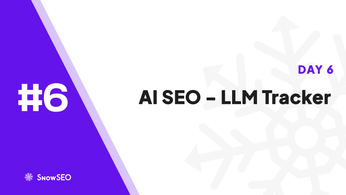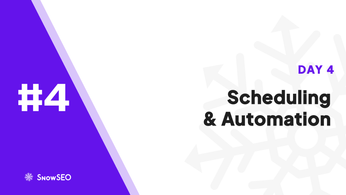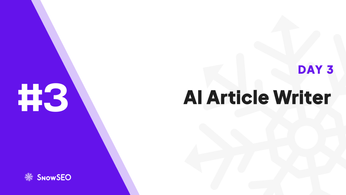
Brand Monitoring vs SEO: Key Differences
Table of Contents
Imagine knowing everything being said about your brand online instantly. In today’s rapidly evolving digital landscape, distinguishing between brand monitoring and search engine optimization (SEO) is essential for crafting effective marketing strategies. This article will dissect these differences and guide you in leveraging both. Backed by industry expert analysis and current data, we’ll explore how each approach contributes uniquely to your brand’s online presence.
Understanding Brand Monitoring
What is Brand Monitoring?
Brand monitoring involves tracking various channels to observe where and how a brand is mentioned. This process encompasses monitoring social media platforms, news outlets, blogs, forums, and other online spaces to gather insights about public perception and brand reputation. By analyzing these mentions, organizations can assess the effectiveness of their marketing strategies, identify potential public relations issues, and understand customer sentiments.
Key Features of Brand Monitoring Tools
Effective brand monitoring tools offer several essential functionalities:
- Real-Time Alerts: Notify businesses immediately when their brand is mentioned, enabling prompt responses to both positive and negative feedback.
- Sentiment Analysis: Evaluate the tone of mentions to gauge public sentiment, distinguishing between positive, negative, and neutral discussions.
- Competitive Analysis: Monitor competitors’ mentions to benchmark performance and identify market opportunities.
- Comprehensive Reporting: Provide detailed reports and analytics to inform strategic decision-making and measure the impact of marketing campaigns.
- Integration Capabilities: Seamlessly connect with other marketing and customer relationship management (CRM) systems to centralize data and streamline workflows.
Implementing robust brand monitoring practices is crucial for maintaining a positive brand image, enhancing customer engagement, and staying competitive in the market.

Understanding SEO
What is SEO?
Search Engine Optimization (SEO) is the practice of enhancing a website’s visibility in organic search engine results. By optimizing various elements of a website, SEO aims to attract more visitors without relying on paid advertising. This involves understanding how search engines operate and aligning content to meet both user needs and search engine criteria.
Search engines like Google and Bing use complex algorithms to crawl, index, and rank web pages. They assess factors such as content relevance, keyword usage, site structure, and user experience to determine a page’s position in search results. Effective SEO ensures that a website is easily discoverable by users seeking related information.
Key Features of SEO Tools
SEO tools are designed to assist in optimizing websites by providing insights and recommendations. Key features include:
- Keyword Research: Identifying terms and phrases that potential visitors use to search for content related to your site. This helps in tailoring content to match user intent.
- On-Page Optimization: Analyzing elements like meta titles, descriptions, headings, and content quality to ensure they align with SEO best practices.
- Technical SEO Analysis: Evaluating site speed, mobile-friendliness, and crawlability to ensure search engines can efficiently index the site.
- Backlink Analysis: Assessing the quality and quantity of external sites linking to your content, which influences domain authority and search rankings.
- Performance Tracking: Monitoring metrics such as organic traffic, bounce rates, and conversion rates to gauge the effectiveness of SEO strategies.
Implementing these features can significantly enhance a website’s search engine performance, leading to increased visibility and user engagement.
Brand monitoring and Search Engine Optimization (SEO) are both essential components of a comprehensive digital marketing strategy, yet they serve distinct purposes and employ different methodologies.
Brand Monitoring involves tracking and analyzing mentions of a brand across various platforms, including social media, forums, blogs, and news outlets. This practice helps organizations gauge public perception, manage their reputation, and respond promptly to feedback or crises. By understanding how and where a brand is discussed, companies can tailor their communication strategies to align with audience sentiments.
SEO, on the other hand, focuses on optimizing a website’s content and structure to improve its visibility in search engine results pages (SERPs). The goal is to attract organic traffic by ranking higher for relevant keywords. Effective SEO involves keyword research, content creation, technical website improvements, and building quality backlinks. For instance, the University of Arkansas emphasizes the importance of selecting appropriate keywords and optimizing site content to enhance search engine rankings. (webfirst.uark.edu)
While both practices aim to enhance a brand’s online presence, their approaches differ:
- Objective:
- Brand Monitoring: Assesses and manages public perception and brand reputation.
- SEO: Increases website visibility and drives organic traffic.
- Tools and Techniques:
- Brand Monitoring: Utilizes social listening tools and analytics to track brand mentions and sentiment.
- SEO: Employs keyword research, on-page optimization, and link-building strategies.
- Metrics:
- Brand Monitoring: Measures sentiment analysis, share of voice, and brand reach.
- SEO: Evaluates keyword rankings, organic traffic, and conversion rates.
Integrating both brand monitoring and SEO allows businesses to not only enhance their search engine visibility but also maintain a positive brand image, ensuring a holistic approach to digital marketing.

Choosing the Right Tool for Your Needs
Selecting the appropriate tool for your business is crucial for achieving your objectives efficiently. Whether you’re considering brand monitoring tools or SEO tools, aligning your choice with your specific business needs is essential.
Identifying Your Business Needs
Begin by assessing your business goals and the challenges you aim to address. For instance, if your focus is on understanding public perception and managing your brand’s reputation, brand monitoring tools are invaluable. These tools help track mentions across various platforms, providing insights into customer sentiment and emerging trends.
Conversely, if your objective is to enhance your website’s visibility and search engine ranking, SEO tools are more appropriate. They offer functionalities like keyword analysis, backlink tracking, and performance analytics, which are vital for optimizing your online presence.
Tip: Clearly defining your goals will streamline the selection process, ensuring the tool you choose effectively addresses your specific requirements.
By meticulously evaluating your business needs and understanding the distinct functionalities of each tool, you can make an informed decision that aligns with your strategic objectives.
Integrating brand monitoring with SEO is a strategic approach that enhances a company’s online presence and reputation. By aligning these efforts, businesses can effectively manage their brand image while improving search engine rankings.
Strategic Integration Methods
- Keyword Alignment: Identify and incorporate keywords associated with your brand into your SEO strategy. This ensures that when users search for your brand, they encounter consistent messaging and content.
- Content Synchronization: Develop content that reflects both brand values and SEO objectives. This includes creating blog posts, articles, and social media updates that are optimized for search engines while conveying the brand’s message.
- Monitoring Brand Mentions: Utilize tools to track where and how your brand is mentioned online. This information can inform SEO strategies by identifying popular platforms and topics associated with your brand.
- Backlink Analysis: Assess the quality and relevance of backlinks to your site. High-quality backlinks from reputable sources enhance SEO performance and reinforce brand credibility.
- Competitor Benchmarking: Analyze competitors’ brand monitoring and SEO tactics to identify opportunities and gaps in your strategy. This can lead to improved positioning in search results.
By integrating brand monitoring with SEO, businesses can create a cohesive online strategy that not only boosts search engine rankings but also strengthens brand reputation and visibility.
Ready to bridge the gap between brand monitoring and SEO? Discover how SnowSEO automates both, unifying your strategy for maximum impact. Explore specific tools that align with your needs at https://snowseo.com.
Frequently Asked Questions
Q1: What is the main difference between brand monitoring and SEO?
Brand monitoring focuses on tracking and analyzing brand mentions, reputation, and public sentiment across digital channels, while SEO aims to improve a website’s visibility in search engine results. Brand monitoring helps companies understand how they are perceived, whereas SEO drives organic traffic and enhances search rankings.
Q2: Can brand monitoring and SEO be used together?
Absolutely! Integrating brand monitoring with SEO provides a holistic view of both brand reputation and search performance. This synergy helps businesses quickly respond to negative mentions, optimize content, and boost overall digital presence.
Q3: Which tools are recommended for brand monitoring and SEO?
Popular tools for brand monitoring include Hootsuite and Google Alerts. For SEO, platforms like Google Search Console and SEMrush are widely used, offering robust analytics and optimization features.
Conclusion
Understanding the distinct roles of SEO and brand monitoring is essential for effective online brand positioning. SEO enhances visibility by optimizing content for search engines, while brand monitoring focuses on managing brand perception through audience engagement. Strategic integration of both can significantly improve a brand’s online presence and reputation management. Exploring tools that align with your specific needs and considering trial versions can help identify the best fit for your brand’s objectives.





